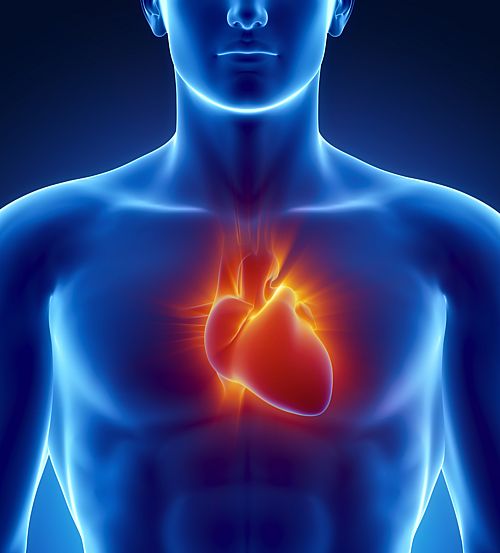Heart Failure

Heart failure is complex and often coexists with other chronic conditions such as hypertension, diabetes, and renal failure. Significant gaps still remain in the diagnosis, prevention, and effective treatment strategies in heart failure patients, contributing to the poor outcome and low survival rate, once diagnosed.
Central pressure waveform and arterial stiffness parameters have been shown to be clinically important in heart failure. [22, 23] Individuals with heart failure often also have a number of other chronic conditions, such as hypertension, diabetes, or renal failure.
Central hemodynamic measurements have been shown to be markers of early organ damage and are considered to be important when quantifying total cardiovascular risk. Central hemodynamic measurements have also been associated with conditions that are heart failure risk factors and co-morbidities, such as hypertension and diabetes.[4]
Association between arterial stiffness and heart failure
Arterial stiffness has been shown to be significantly higher in individuals with heart failure with preserved ejection fraction (HFpEF) compared to individuals without heart failure. [10,11]
Furthermore, aortic pulse wave velocity (PWV), the most common surrogate measure of arterial stiffness, has been reported to steadily increase from healthy normotensive individuals to hypertensives to those with HFpEF. [10]
In addition, aortic PWV has been shown to be significantly higher in HFpEF) compared to heart failure with reduced ejection fraction (HFrEF). [11,12] Further examination of the factors associated with aortic PWV and heart failure indicated that aortic PWV was weakly influenced by hemodynamic factors and therefore remained a good independent prognostic parameter in HFpEF. [12]
Measures of wave reflections have been shown to be associated with left ventricular systolic and diastolic function in hypertensive patients. Furthermore, aortic stiffness (measured by aortic pulse wave velocity) has been shown to be associated with a significantly increased risk of developing heart failure in the future. [13,22]
Arterial stiffness may play an important role in risk stratification, and interventions to reduce large artery stiffness may reduce the risk of incident heart failure. In addition, central arterial pressure waveform analysis and arterial stiffness may play an important role in the management of heart failure therapy as they provide additional information to help with therapeutic decision-making. A randomized, controlled pilot study conducted by the Mayo Clinic and the University of Arizona tested the strategy of making treatment decisions using central pressure waveform analysis versus conventional guideline directed therapy. It was observed that patients treated with central pressure guidance demonstrated significant improvement in exercise capacity and peak oxygen consumption compared to controls. This preliminary data implies that aggressive afterload reduction guided by central pressure waveform assessment can improve outcomes even in the setting of maximal guideline-directed medical therapy.[21] Measurement of central arterial pressure waveforms and arterial stiffness are also clinically valuable for monitoring treatment.
There is a large body of evidence documenting the effects of pharmacological treatment on arterial stiffness [15,17] and more recently the guidance of therapy in hypertension.[18] This includes a number of drugs that are currently prescribed for heart failure patients.
A number of studies have investigated the effects of different pharmacological therapies in heart failure patients. Switching from a selective to non-selective beta blocker (carvedilol) in patients with heart failure with chronic obstructive pulmonary disease resulted in short term reduction in aortic augmentation index (AIx) as well as NT-proBNP, an established prognostic marker in heart failure, with no change in brachial pressure..[19] An earlier study observed the negative effect on AIx from aspirin in heart failure patients taking ACE-inhibitors compared to clopidogrel, a drug considered to be a safe alternative to aspirin.[20]
In one recent study of heart failure patients, treatment decisions were guided by the central pressure waveform, compared to conventional clinical assessment. This small study showed that aggressive titration of heart failure medications guided by AIx was associated with improved exercise capacity. Patients who were treated by the AIx-guided pathway were more likely to receive additional vasoactive medications, including nitrates, aldosterone antagonists, and hydralazine, with no increased risk of side effects, such as decreased renal function, dizziness, and syncope.[21] These preliminary data imply that aggressive afterload reduction, guided by central pressure waveform assessment, can improve outcomes even in the setting of maximal guideline-directed medical therapy.

